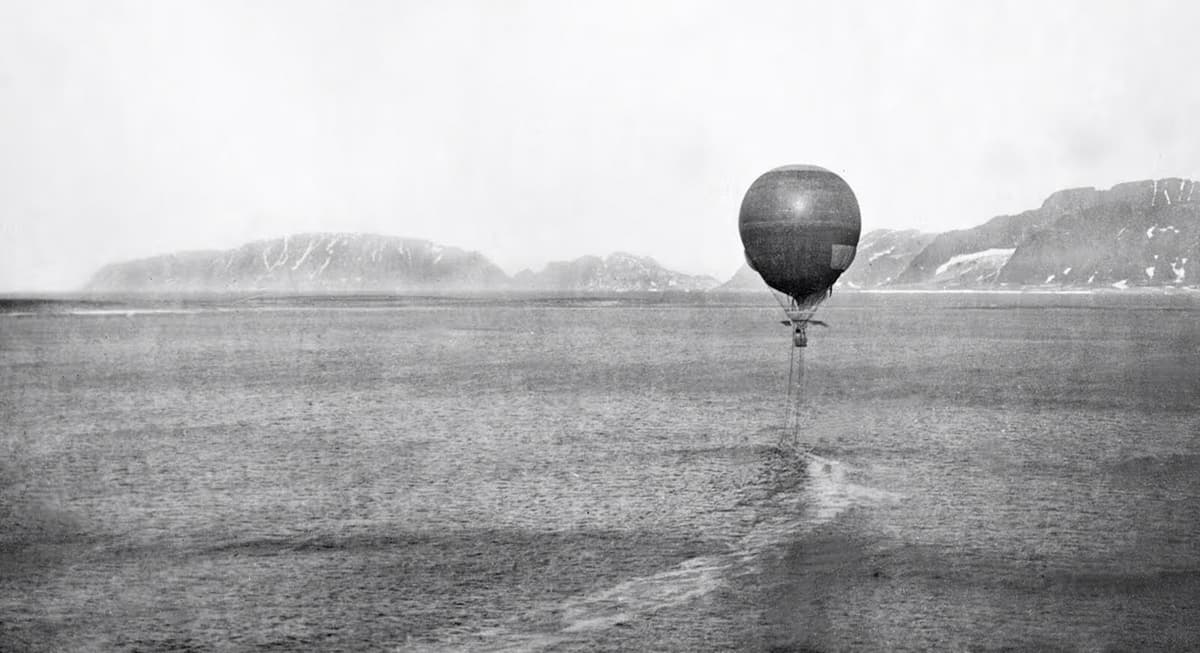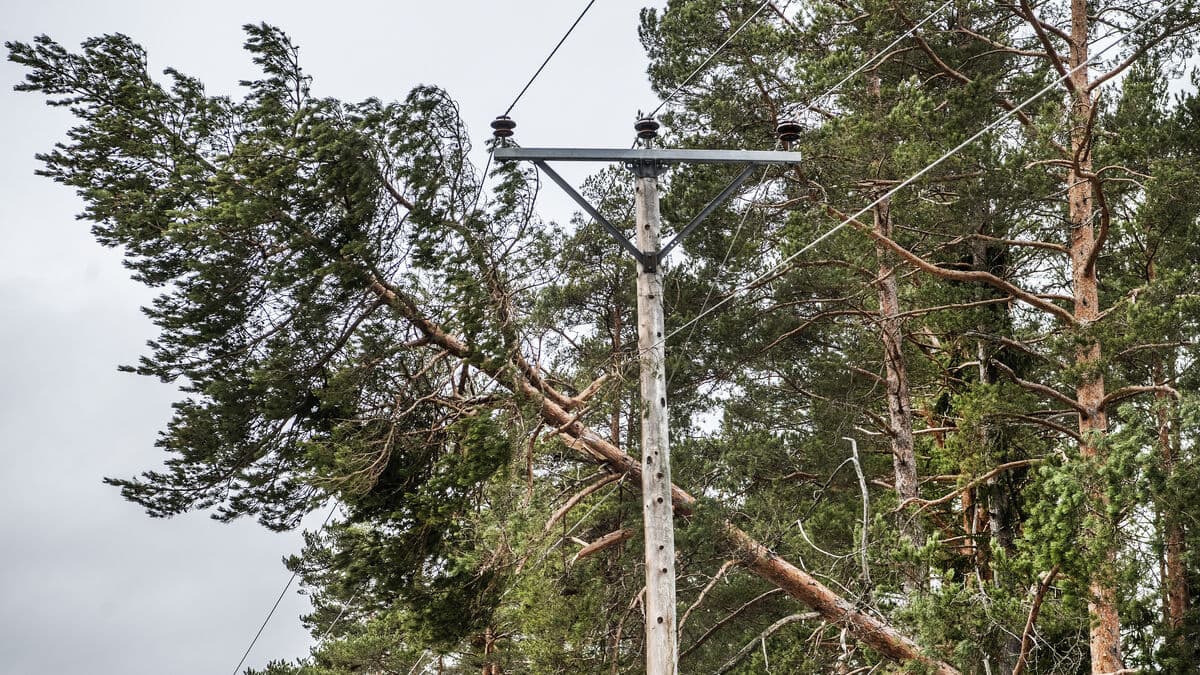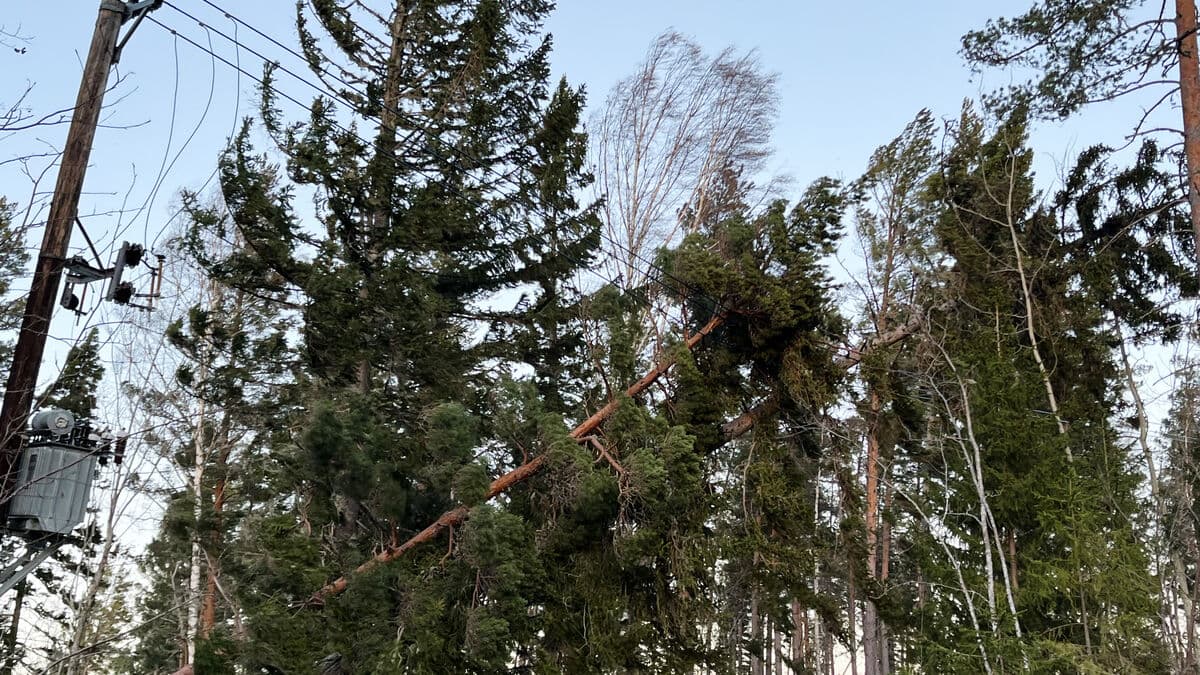The 11th of July 1897, the hydrogen balloon Örnen took off from Danskön in northwestern Svalbard, near Spitsbergen.
On board were the explorers and engineers Salomon August Andrée, Nils Strindberg, and Knut Frænkel, with the task of mapping the area by flying over the North Pole.
Due to bad weather, the flight was aborted, and the crew began a march through the Arctic. It wasn't until 1930 that the men were found dead on Vitön in the North Ice Sea.
There are many mysteries surrounding the expedition, says Björn Lantz, who has researched various polar expeditions for several years.
Together with author, doctor, and KI researcher Bea Uusma, as well as meteorology professor Michael Tjernström at Stockholm University, he presents a new possible scenario for the balloon's journey over northwestern Svalbard in a scientific article.
Sharp turn east
The conclusion in the scientific article, published in Cambridge University Press, is that the balloon made a sharp turn east just a short time after takeoff. Therefore, it may have been over a different island than the one, Fuglesongen, which Nils Strindberg himself indicated as the location where he dropped the jar with a final love message to his fiancée Anna Charlier.
We can show that Andrée's balloon took a significantly more easterly route over the small island group than previously thought. They were in a thick cloud and couldn't have had any visibility at all from the balloon basket.
A consequence of this is that the jar may have been thrown on Klovningen, which is very close, just a few kilometers away, says Björn Lantz.
The article consists of a meteorological analysis, an analysis of Strindberg's notes, and an illustration from a spectator at the starting point on Danskön, where the spectator has drawn in the silhouettes of the islands and points for the balloon's position at different times.
If you draw a straight line from the shore where he stood, the balloon must have been significantly more easterly, otherwise, he wouldn't have been able to see the balloon in that direction.
The meteorological analysis also confirms a more pronounced turn east, according to the researchers, who have also found errors in previous analyses of Nils Strindberg's notes from the balloon flight.
The notes and diary were found on Vitön in 1930, along with the discovery of the crew.
The analysis shows that the notes have been misread. For example, a sentence shouldn't be read as a new row, but is connected to the previous sentence, says Björn Lantz.
Klovningen becomes the third island guess for where the final love letter to Nils Strindberg's fiancée Anna Charlier may have ended up.
The plan was, after all, for a crew to row out to Amsterdamön, where Nils Strindberg would drop the jar with the letter, a short time after the balloon had taken off.
But he forgot. And that wasn't discovered until the crew and diary were found on Vitön in 1930.
In the diary, it says: "My jar with farewell words to Anna was thrown on Vogelsang".
Particularly interesting
The greeting has thus been searched for on Amsterdamön directly after the expedition, as well as on the island Fuglesongen, previously Vogelsang, but without result.
It may be because the jar has ended up in the sea, hidden in a cliff crevice, or that it is indeed on the adjacent Klovningen.
Nils Strindberg wrote several letters to his fiancée, letters that were found on Vitön.
But the missing love message that may now be on Klovningen is particularly interesting.
In the best of worlds, it might give some clue to what they had as their goal for the expedition. If they still had as their primary goal to reach the North Pole or if they primarily wanted to test flying a balloon over the ice.
Björn Lantz describes Nils Strindberg's situation and how a letter might be formulated.
If you were to write a final greeting to your fiancée, you might write something like "don't worry, we'll be back soon because we're going to do this and that..."
But we don't know what's in the letter, that's what's exciting. It's a mystery that remains surrounding the expedition.
The balloon journey to the North Pole in 1897 and what happened to the polar researchers has led to several studies on what happened to the polar explorers and what was the goal of the journey.
Author, doctor, and researcher Bea Uusma has written a book and conducted her own research on the fate of the Andrée expedition.
Material from the balloon flight and the subsequent ice march was found on Vitön, such as diary notes from Andrée and Strindberg, as well as meteorological notes from Frænkel.
It was not uncommon for polar explorers to write letters to their loved ones, even if the letters couldn't be posted. It was a way to get down on paper what they thought and felt.
In the letters found on Vitön, there is important information about the expedition, both about the balloon lift-off and the decisions made.
The letters complement the diary material. For example, it only emerges in a letter that Nils Strindberg wrote to Anna that "now we're going to Kap Flora". This hasn't emerged in any other documentation, for example, from Andrée himself.
Source: Chalmers, TT





